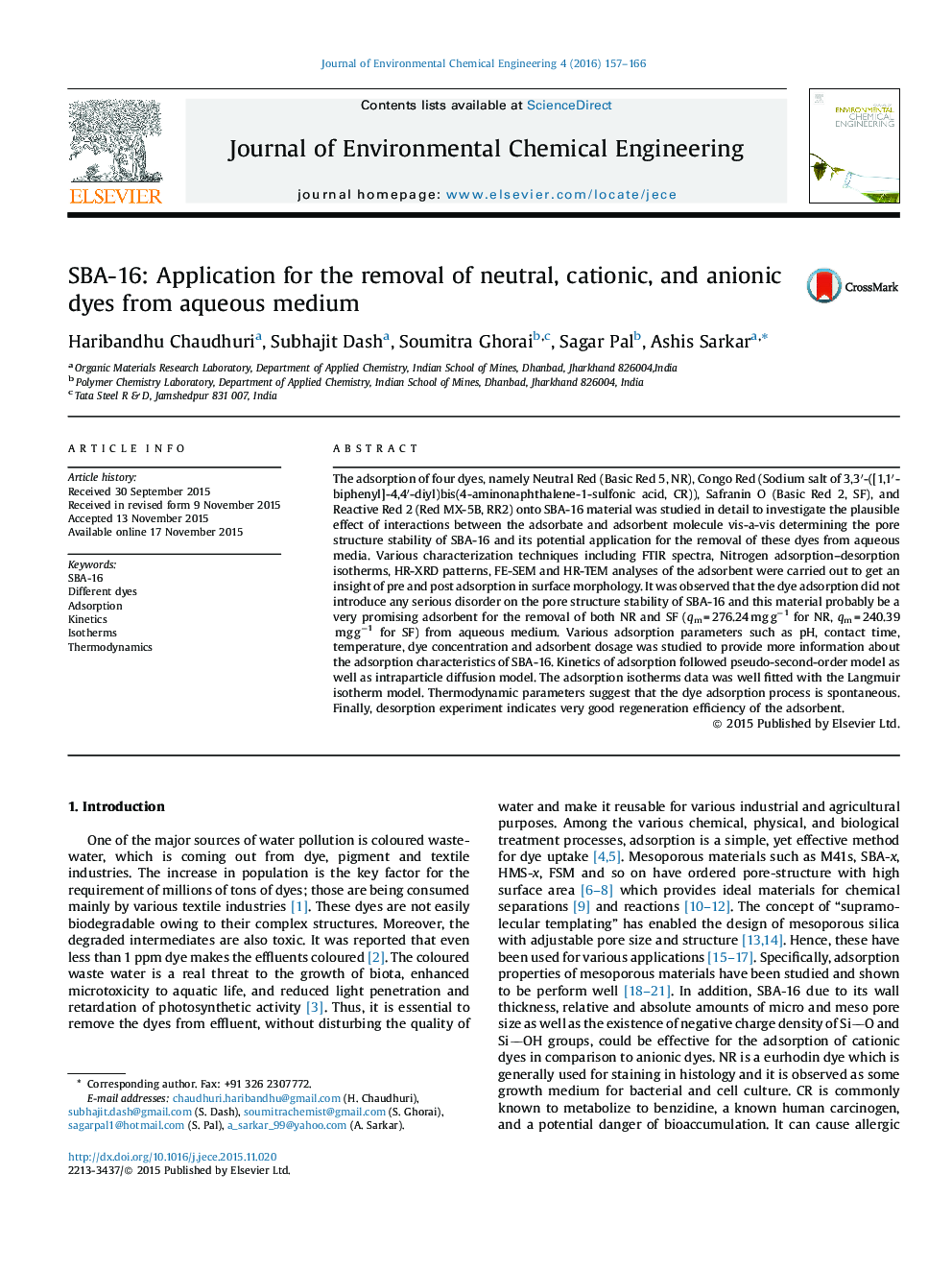| کد مقاله | کد نشریه | سال انتشار | مقاله انگلیسی | نسخه تمام متن |
|---|---|---|---|---|
| 221871 | 464267 | 2016 | 10 صفحه PDF | دانلود رایگان |
• Adsorption of NR, CR, SF, and RR2 using SBA-16 has been carried out.
• Adsorption maxima of both NR and SF are higher in comparison to both CR and RR2.
• Pseudo-second-order, intraparticle diffusion and Langmuir model fitted well.
• Very good regeneration capacity of SBA-16.
The adsorption of four dyes, namely Neutral Red (Basic Red 5, NR), Congo Red (Sodium salt of 3,3′-([1,1′-biphenyl]-4,4′-diyl)bis(4-aminonaphthalene-1-sulfonic acid, CR)), Safranin O (Basic Red 2, SF), and Reactive Red 2 (Red MX-5B, RR2) onto SBA-16 material was studied in detail to investigate the plausible effect of interactions between the adsorbate and adsorbent molecule vis-a-vis determining the pore structure stability of SBA-16 and its potential application for the removal of these dyes from aqueous media. Various characterization techniques including FTIR spectra, Nitrogen adsorption–desorption isotherms, HR-XRD patterns, FE-SEM and HR-TEM analyses of the adsorbent were carried out to get an insight of pre and post adsorption in surface morphology. It was observed that the dye adsorption did not introduce any serious disorder on the pore structure stability of SBA-16 and this material probably be a very promising adsorbent for the removal of both NR and SF (qm = 276.24 mg g−1 for NR, qm = 240.39 mg g−1 for SF) from aqueous medium. Various adsorption parameters such as pH, contact time, temperature, dye concentration and adsorbent dosage was studied to provide more information about the adsorption characteristics of SBA-16. Kinetics of adsorption followed pseudo-second-order model as well as intraparticle diffusion model. The adsorption isotherms data was well fitted with the Langmuir isotherm model. Thermodynamic parameters suggest that the dye adsorption process is spontaneous. Finally, desorption experiment indicates very good regeneration efficiency of the adsorbent.
Figure optionsDownload as PowerPoint slide
Journal: Journal of Environmental Chemical Engineering - Volume 4, Issue 1, March 2016, Pages 157–166
